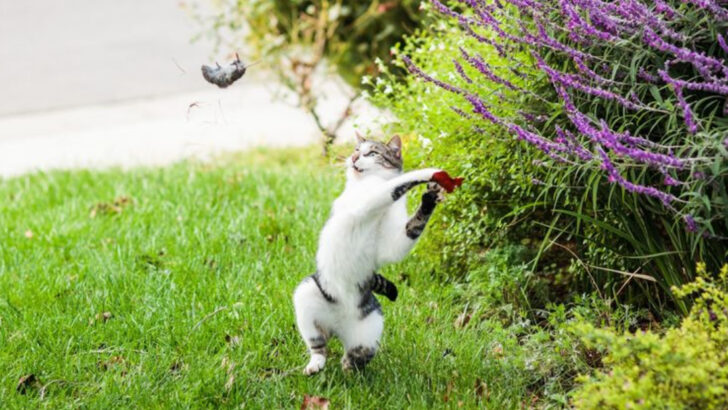Your cat isn’t just being weird—it’s channeling the wild.
That sideways crab-walk? Pure jungle drama.
The slow blink? A battle-tested survival tactic.
That sudden 3AM hallway sprint? Blame their ancient wiring, not your sleep schedule.
Beneath all the purring, loafing, and curtain-climbing lives a miniature predator with instincts forged over thousands of years. Your modern housecat might lounge on a velvet pillow, but their brain still whispers secrets from the wild.
Every tail twitch, every paw swipe, every dramatic flop onto your laptop—it’s all part of a much older story.
Let’s pull back the curtain on the feline mind and uncover the ancient behaviors hiding in plain sight.
Kneading
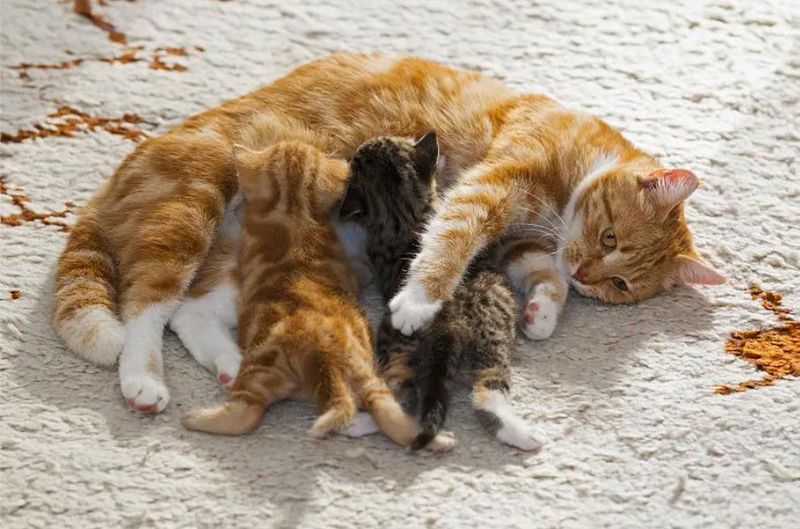
When your cat kneads on your lap or against a soft surface, it’s tapping into a comforting behavior that dates back to kittenhood. Kittens knead their mother’s belly to stimulate milk flow during nursing. This rhythmic motion brings a sense of security and contentment, reminiscent of their earliest days.
Purring

Purring is a fascinating behavior that’s often associated with pleasure and relaxation. However, cats may also purr when they’re frightened or in pain. The act of purring can be traced back to a soothing mechanism that promotes healing and alleviates stress. This gentle vibration can bring comfort to both the cat and its owner.
Hunting Play
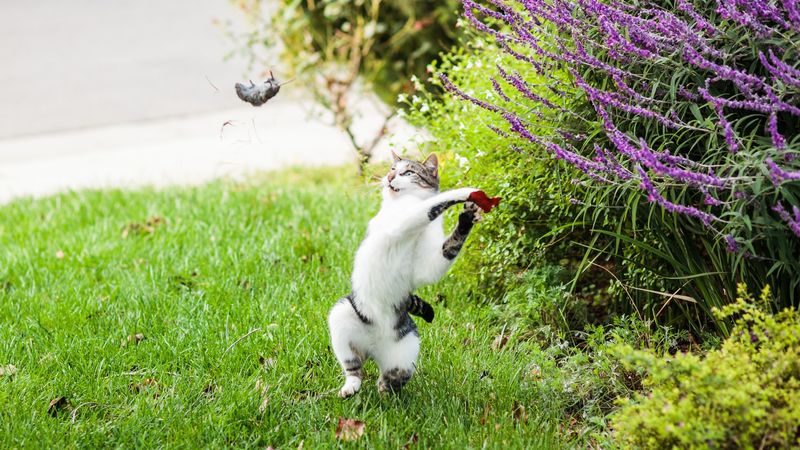
Even the most pampered house cat exhibits hunting behaviors, such as stalking, pouncing, and batting at toys. These playful actions mimic the strategies used by their wild ancestors to catch prey. By engaging in hunting play, cats hone their instincts, improve their physical prowess, and relieve boredom.
Burying Waste
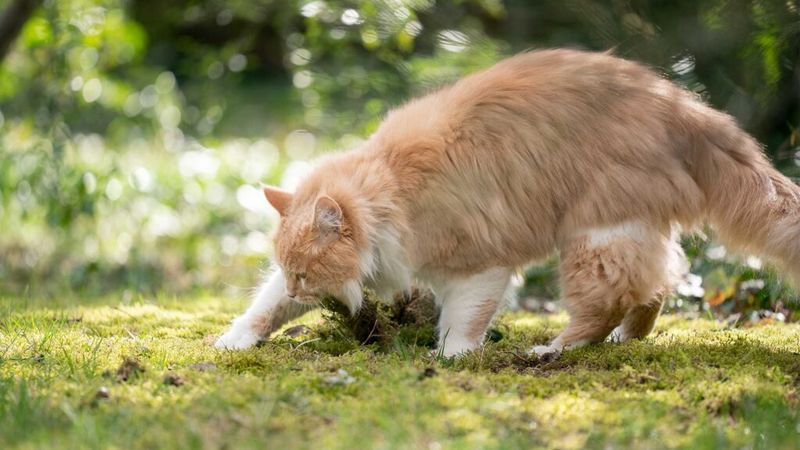
Cats have an instinct to bury their waste, a behavior inherited from wild felines. In the wild, covering up waste helps conceal their presence from predators and rivals. This natural tendency to be clean and secretive continues in domestic cats, who often cover their litter box deposits diligently.
Scratching
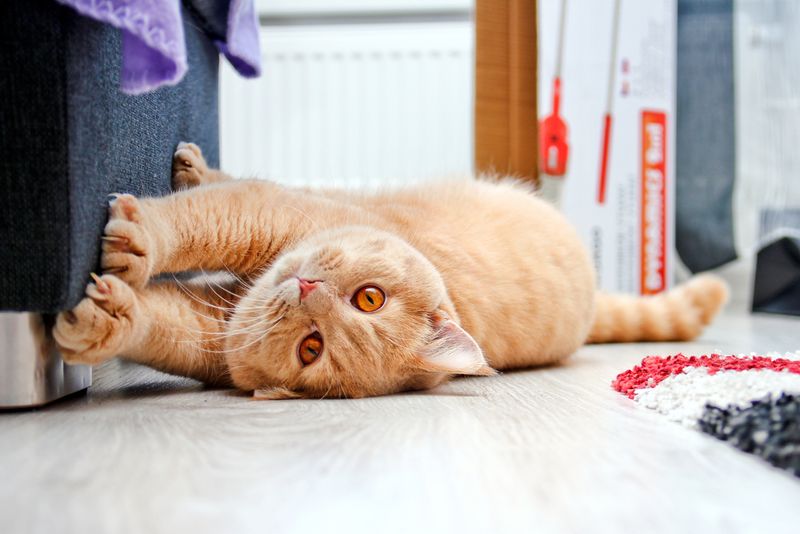
Scratching serves several purposes, including marking territory, sharpening claws, and stretching muscles. Cats have glands in their paws that release scent, so when they scratch, they leave both a visual mark and a scent mark. This dual-purpose behavior is a powerful way for cats to communicate and maintain their territory.
Chirping
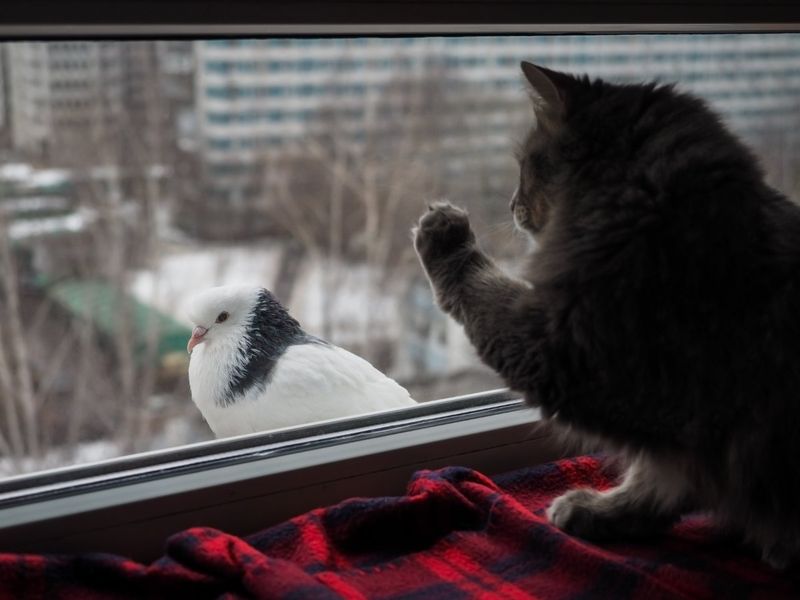
Chirping or chattering is a curious vocalization cats make when observing birds or small animals from a distance. This sound is believed to be an instinctive mimicry of bird calls or an expression of frustration. It reflects the cat’s predatory excitement and desire to catch the elusive prey just out of reach.
Night Activity
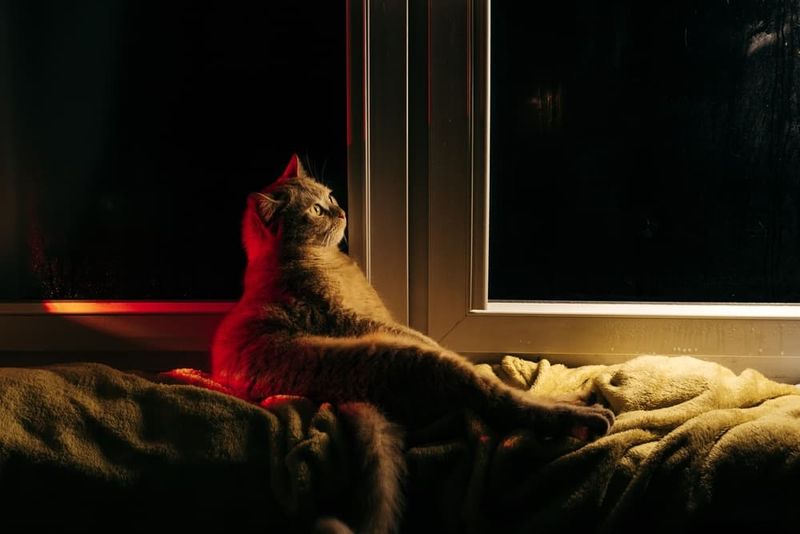
Cats are crepuscular creatures, meaning they are most active during dawn and dusk. This behavior is inherited from their ancestors who hunted during these times to take advantage of low light conditions. Your cat’s night-time antics are a reflection of their natural rhythm and hunting instincts kicking in.
Rubbing Against You
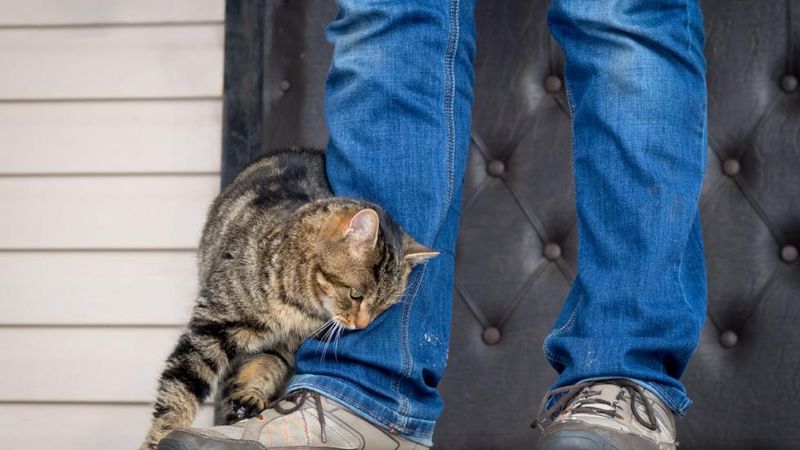
When a cat rubs its face against you, it’s not just being affectionate. This behavior is a form of marking, as cats have scent glands in their cheeks. By transferring their scent onto you, they are claiming you as part of their territory. It’s a mix of affection and possessiveness deeply rooted in their social structure.
Tail Twitching
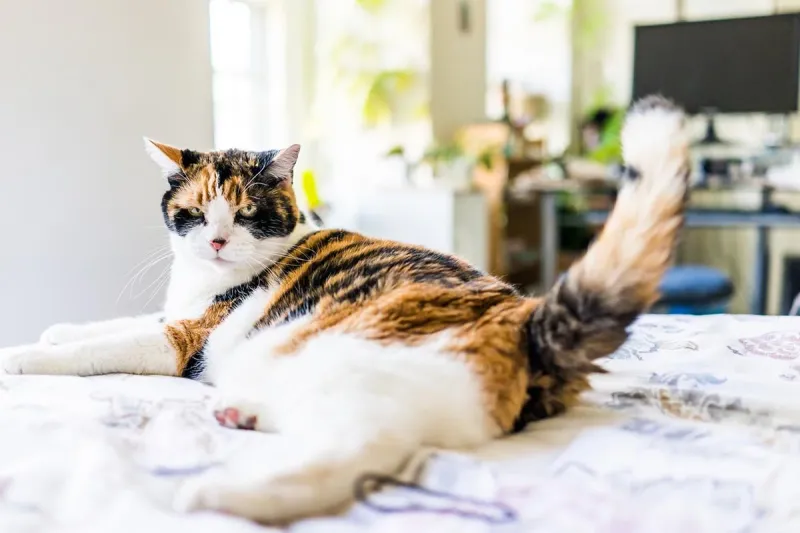
Tail twitching is a complex form of communication for cats. It can indicate irritation, excitement, or concentration. This behavior is rooted in their predatory instincts, as a twitching tail can help communicate intentions to other cats or signal readiness to pounce. It’s a subtle yet powerful way they express themselves.
Hissing
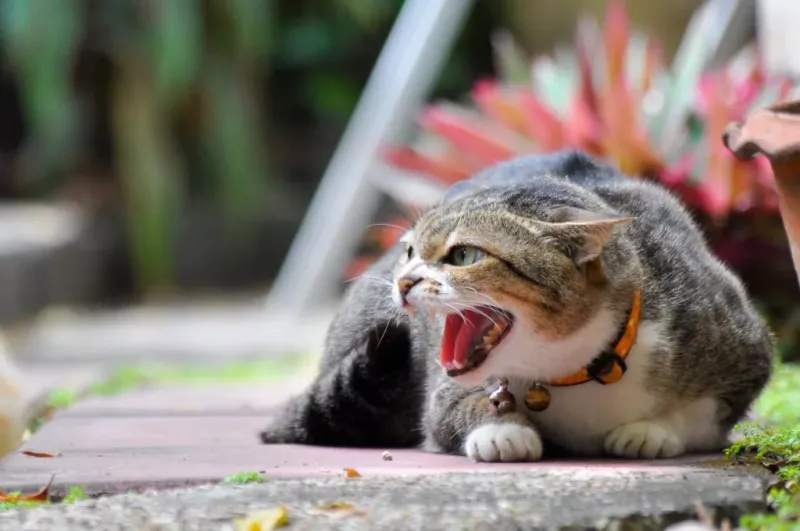
Hissing is a defensive behavior that serves as a warning to potential threats. When a cat feels threatened, it will hiss to deter aggressors. This instinctive response is a survival mechanism inherited from their wild ancestors, conveying fear and aggression to avoid conflict and protect themselves.
Ear Flicking

Cats have highly sensitive ears, capable of detecting a wide range of sounds. Flicking their ears is an instinctual response to auditory stimuli, allowing them to pinpoint the exact source of a noise. This behavior is crucial for hunting and avoiding danger, reflecting their acute sense of hearing and alertness.
Slow Blinking
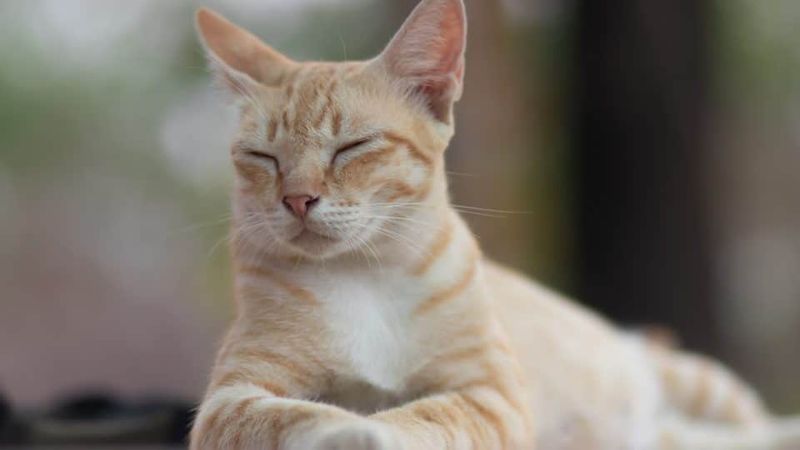
Slow blinking is a sign of trust and affection in cats. When a cat slowly blinks at you, it’s equivalent to a feline kiss, indicating they feel safe and comfortable in your presence. This behavior is deeply rooted in their social interactions, as cats use it to communicate peaceful intentions with one another.
Licking Their Fur
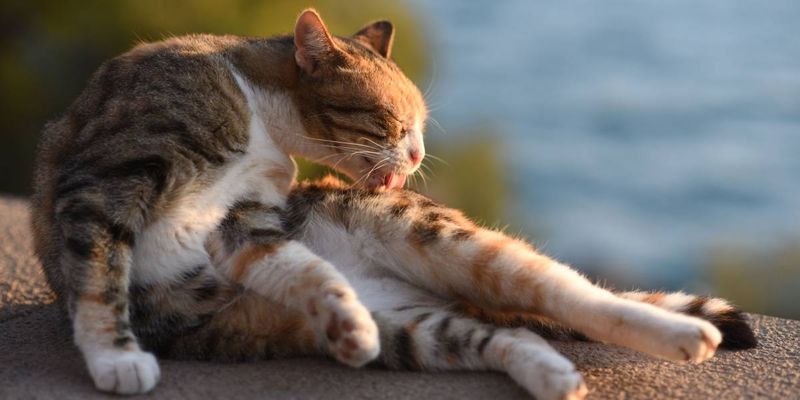
Grooming is an instinctive behavior that goes beyond cleanliness. Cats lick their fur to regulate body temperature, distribute natural oils, and strengthen social bonds with other cats through mutual grooming. This meticulous attention to their coat reflects their need for self-care and social connection.
Hiding in Small Spaces
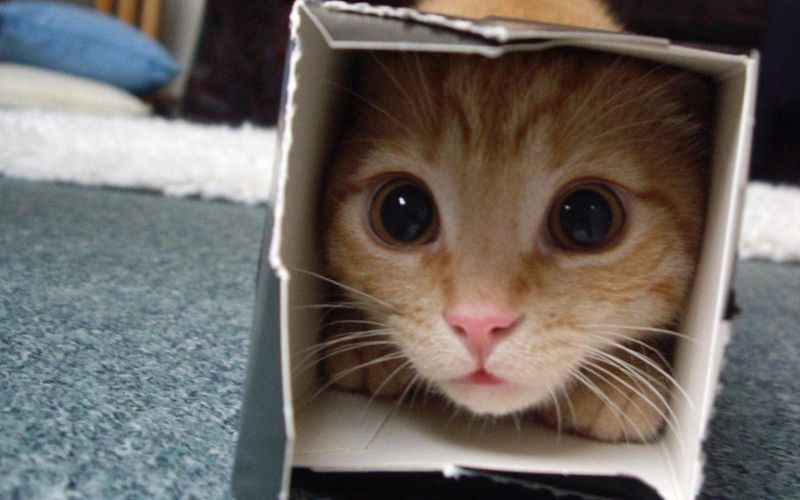
Cats have a natural affinity for small, enclosed spaces, reminiscent of the dens their ancestors used for safety. These cozy spots provide a sense of security and protection from predators. By retreating to these hiding places, cats can relax and observe their surroundings from a safe vantage point.
Bringing ‘Gifts’
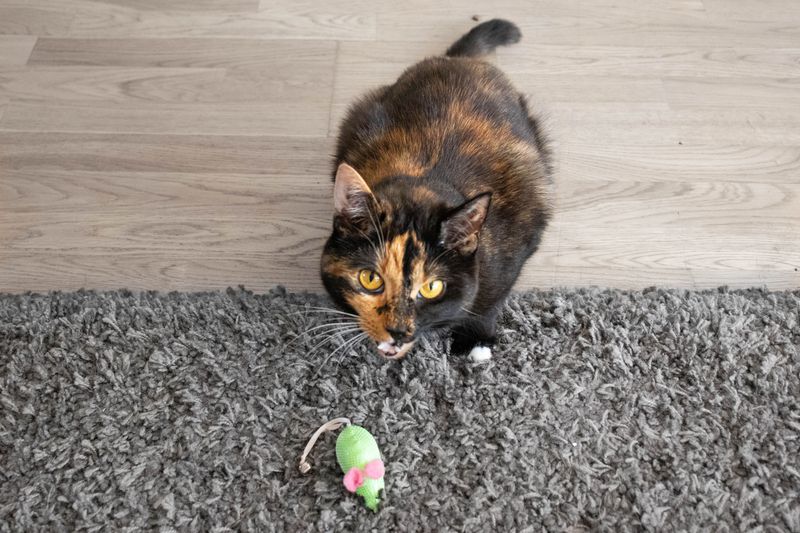
When a cat brings you a ‘gift,’ such as a mouse or bird, it’s displaying its hunting prowess and caring instincts. This behavior is rooted in their role as hunters and providers, sharing the spoils of the hunt with their family. It’s a gesture of trust and a reminder of their predatory nature.

